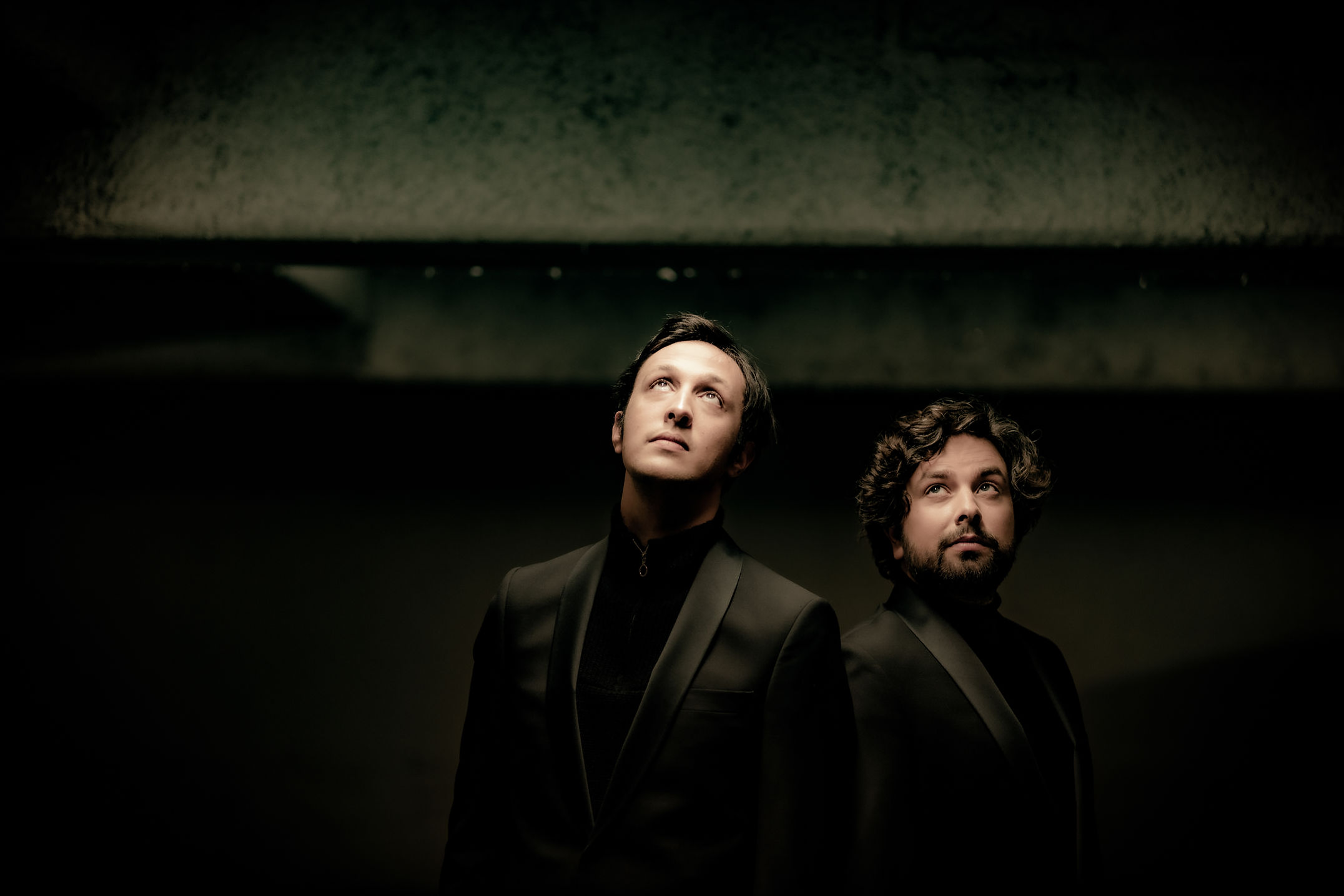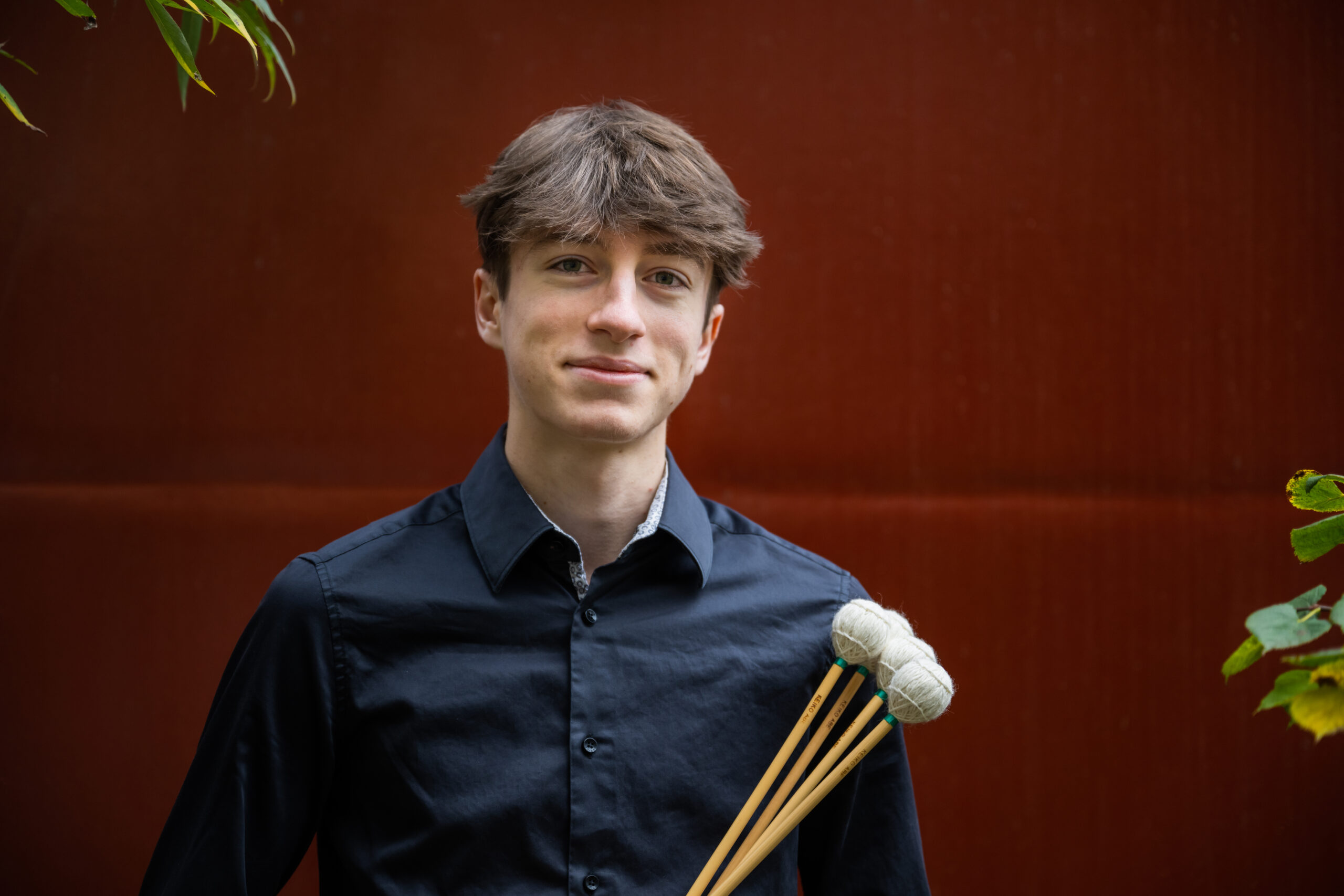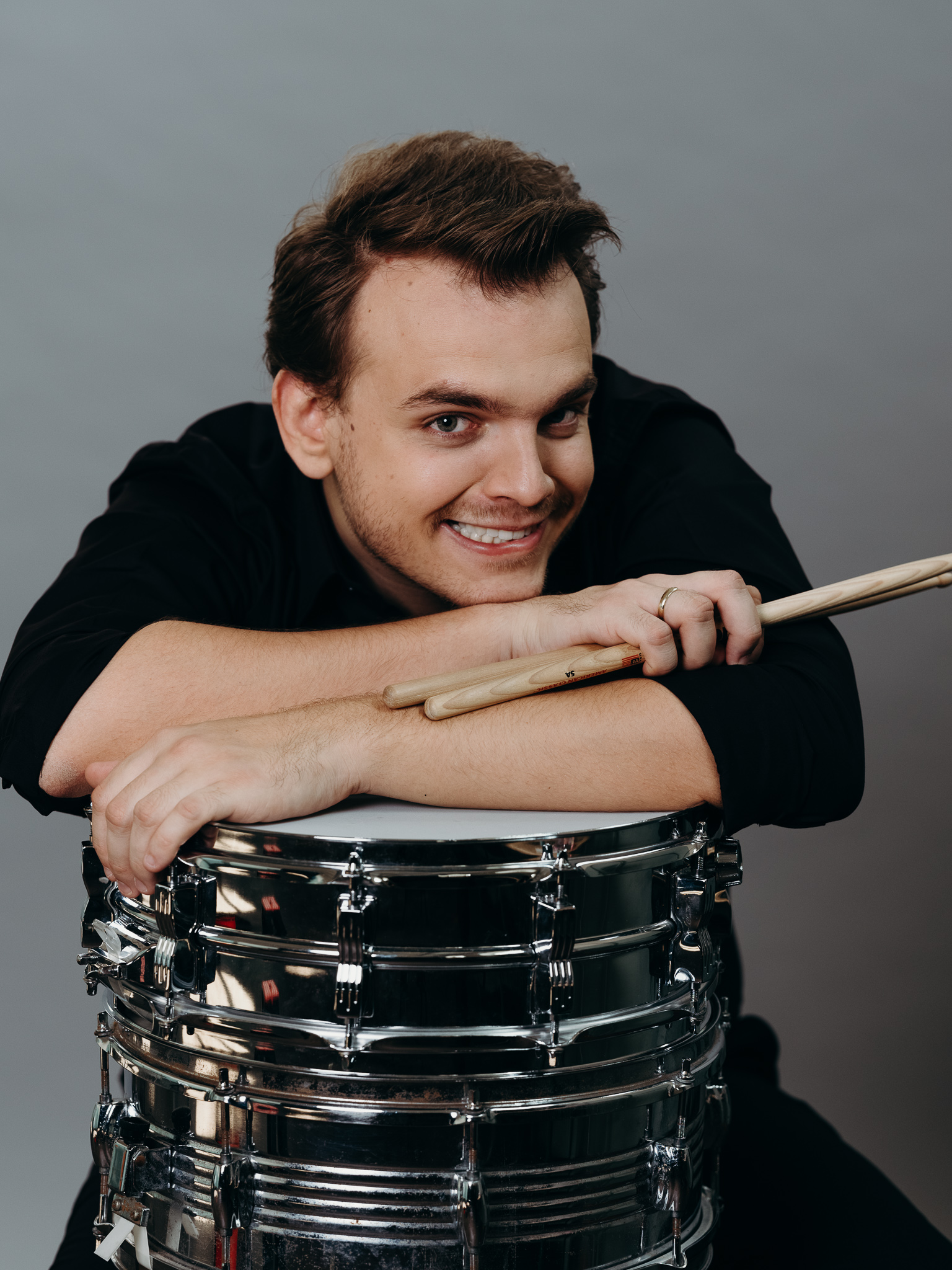Performers
- Geister Duo
- David Salmon piano
- Manuel Vieillard piano
- Gabriel Michaud percussion
- Karol Krasiński percussion
Programme
Sergei Rachmaninov Suite No. 1 in G minor Fantaisie-tableaux for two pianos, Op. 5 [23’]
I. Barcarolle: Allegretto
II. La nuit… L’amour…: Adagio sostenuto
III. Les Larmes: Largo di molto
IV. Pâques: Allegro maestoso
Béla Bartók Sonata For Two Pianos And Percussion, BB.115 [30’]
I. Assai lento – Allegro molt
II. Lento, ma non troppo
III. Allegro non troppo
Concert description
The piano is not only the largest, but also the most versatile instrument of the orchestra. It can sing lyrical cantilenas, add a painterly backdrop, sound menacing like a mighty choir or charm with subtle grace like a ballerina. Two pianos only add to this artistic potential, and Sergei Rachmaninoff’s Suite No. 1 in G minor lets you revel in it. In it we hear both a fabulously light shimmering dance (Barcarolle) and a dreamy vision of a romantic night (La nuit… L’amour…). In contrast, the quiet deep sadness of the third movement contrasts with the solemn drama of the finale.
While Rachmaninoff affects feelings and imagination through musical images, Béla Bartók’s music speaks directly to primal instincts. The Hungarian composer discovered a previously unknown face of the piano, which in his compositions becomes one of the most magnificent percussion instruments. The vibrant style of Bartók’s music, inspired by folklore and pagan rituals, is referred to as “barbarism.” In it, the Hungarian composer reaches back to his native roots and what is primal in every culture – energy, pulse and rhythm.
– Karolina Dąbek (pisanezesluchu.pl)






